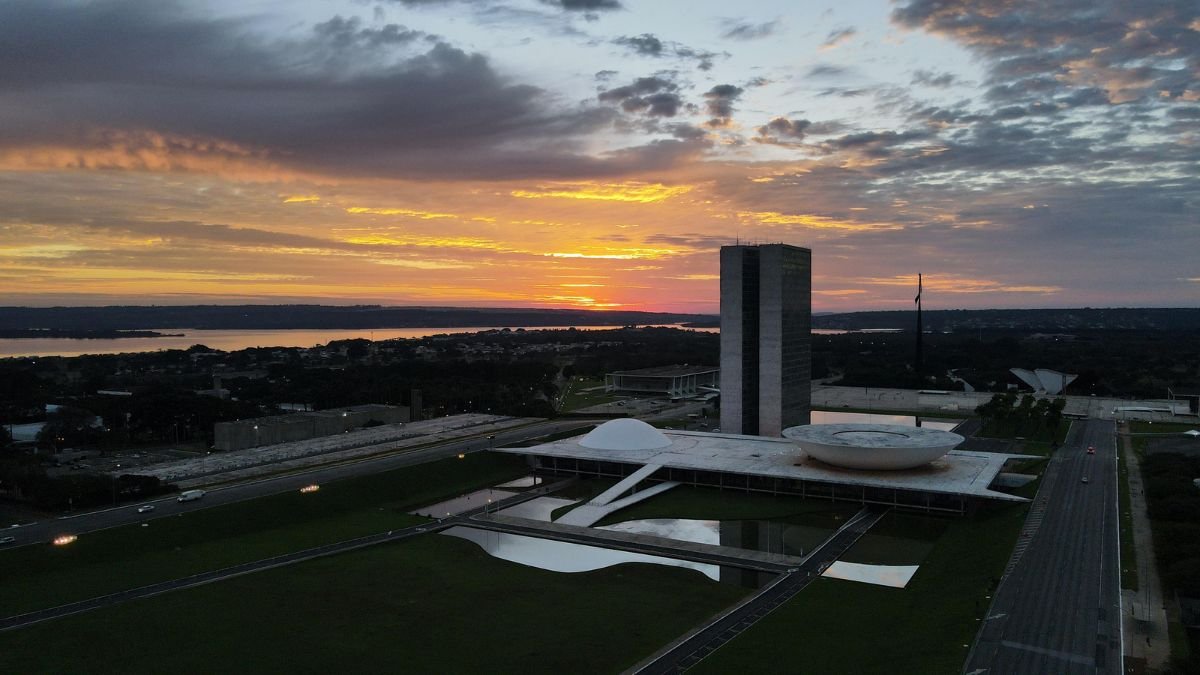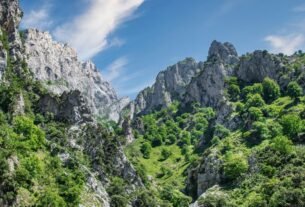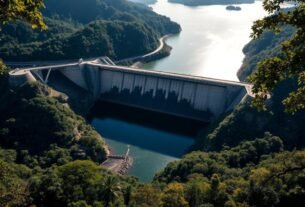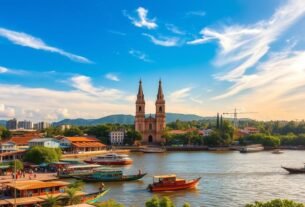Introduction
Have you ever wondered what makes a city truly unique? Brasilia, Brazil’s planned capital, is a masterpiece of modernist architecture and urban design, celebrated for its innovative approach to urban planning. If you’re looking for Brasilia what to do, you’ll find that, built in just three years during the 1960s, this UNESCO World Heritage Site stands as a testament to human creativity and innovation, showcasing a vision that was ahead of its time.
The city was conceived as a means to promote the development of Brazil’s interior, shifting the focus from coastal cities to the heart of the country. Its layout and design reflect a bold ambition to create a functional and aesthetically pleasing urban environment that harmonizes with the surrounding landscape.
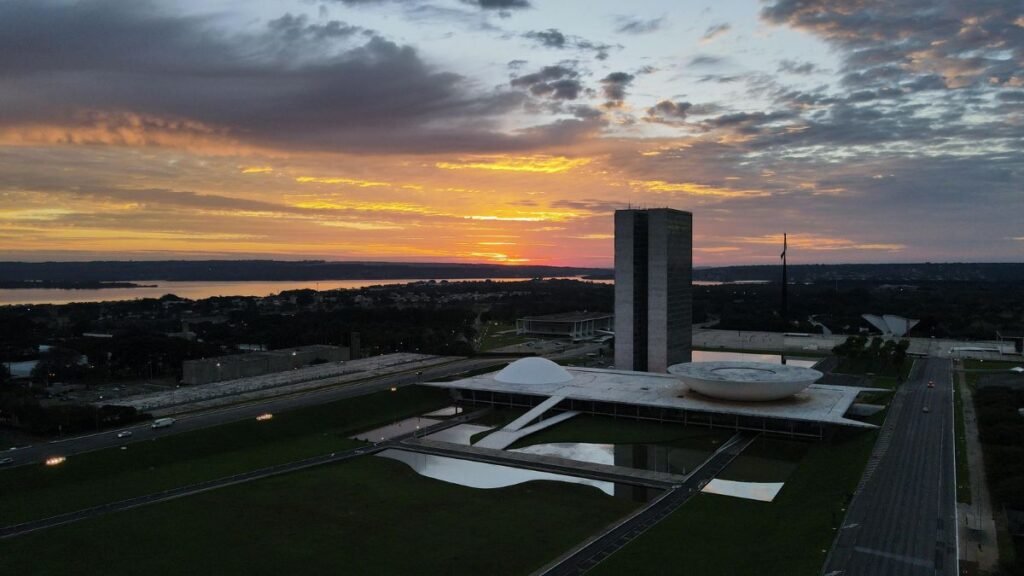
Unlike traditional Brazilian cities like Rio de Janeiro, Brasilia boasts a futuristic layout shaped like an airplane, a design that not only serves aesthetic purposes but also optimizes urban functionality. Designed by Lúcio Costa and adorned with Oscar Niemeyer’s iconic structures, the city is a visual marvel, showcasing a seamless blend of art and architecture.
But beyond its government buildings, which are impressive in their own right, there’s a wealth of unexpected attractions waiting to be explored, including parks, museums, and cultural centers that reflect the vibrant spirit of Brazil.
From cultural landmarks to hidden gems, this article reveals 10 surprising spots that showcase the city’s charm, such as the stunning Cathedral of Brasilia and the unique JK Memorial. Whether you’re an architecture enthusiast or a curious traveler, Brasilia offers experiences that defy expectations, allowing visitors to immerse themselves in its rich history and modern vibrancy, making it a destination that captivates all who wander its streets.
Key Takeaways
- Brasilia is a UNESCO World Heritage Site with avant-garde urban planning.
- The city’s airplane-shaped layout was designed by Lúcio Costa.
- Oscar Niemeyer’s modernist architecture defines 80% of its landmarks.
- It contrasts sharply with traditional Brazilian cities, such as Rio de Janeiro.
- Beyond government buildings, Brasilia offers unique cultural attractions.
- The city was built in just three years (1956-1960).
- It’s a must-visit destination for architecture and design enthusiasts.
Brasilia what to do?
As Brazil’s political hub, Brasilia combines functionality with artistry. Since its inauguration in 1960, this capital city has served as the nation’s administrative heart. Yet, it’s far more than just a bureaucratic center. Brasilia is a masterpiece of modernist architecture and urban planning.
Designed by Lúcio Costa and brought to life by Oscar Niemeyer, the city boasts over 170 iconic buildings. Its unique airplane-shaped layout, known as the “Plano Piloto,” symbolizes progress and innovation. This central district is a testament to human creativity and forward-thinking design.
Located in Brazil’s central highlands at an elevation of 1,172 meters, Brasilia offers a refreshing climate. The city spans 5,800 square kilometers, making it one of the largest urban areas in the country. Artificial Paranoá Lake was created to increase humidity, adding to the city’s livability.
Visitors can enjoy panoramic views from the 224-meter TV Tower, a highlight of any trip. Whether you’re exploring its architectural wonders or experiencing its vibrant life, Brasilia promises unforgettable things to discover.
| Statistic | Details |
|---|---|
| Population | 2.8 million |
| Urban Area | 5,800 km² |
| Elevation | 1,172 meters |
| Buildings by Oscar Niemeyer | 170+ |
A Brief History of Brasilia
Few cities in the world have a history as fascinating as Brasilia’s. The idea of relocating Brazil’s capital dates back to the 19th century, when leaders envisioned a central hub to unify the nation.
This vision was born out of a desire to promote development in the country’s interior, moving away from the coastal cities that had historically dominated political and economic life. However, it wasn’t until the 1950s that this dream became a reality.
Under the leadership of President Juscelino Kubitschek, the project gained momentum and captured the nation’s imagination. His ambitious slogan, “50 Years in 5,” reflected his vision to modernize Brazil rapidly and to propel it into a new era of growth and innovation.
The construction of Brasilia began in 1956, marking a pivotal moment in Brazilian history, and within just 41 months, the city was completed. This remarkable feat involved over 60,000 workers, who labored around the clock to meet the tight deadline, overcoming numerous challenges, including harsh weather conditions and logistical hurdles.
The project aimed not only to create a new capital but also to stimulate economic development in Brazil’s interior regions, thereby promoting a more balanced distribution of resources and opportunities. As a result, Brasilia emerged not just as a political center but as a symbol of progress and unity for the entire nation.
The Vision Behind Brasilia
The city’s design was a collaboration between architect Oscar Niemeyer and urban planner Lúcio Costa. Costa’s “Plano Piloto” layout, shaped like an airplane, symbolized progress and efficiency. Niemeyer’s modernist buildings added an artistic touch, making Brasilia a visual masterpiece.
“Brasilia is not just a city; it’s a symbol of Brazil’s future.” – Lúcio Costa
The Role of Oscar Niemeyer
Niemeyer’s contributions to Brasilia are unparalleled. He designed over 170 buildings, including the iconic Cathedral of Brasilia and the National Congress. His innovative use of curves and concrete not only redefined modernist architecture but also introduced a new aesthetic that emphasized fluidity and harmony with the environment.
Despite the challenges of construction, such as 24/7 work shifts and the use of prefabricated materials that were necessary to meet tight deadlines, Niemeyer’s vision remained intact, showcasing his commitment to creating a city that embodied the ideals of modernity and progress.
However, the rapid development came with its own set of issues. Many residents struggled to form a cultural identity in a city built from scratch, where the absence of historical context and established community traditions posed significant challenges.
Yet, Brasilia’s unique history and design continue to inspire architects and urban planners worldwide, serving as a case study in the complexities of urban development and the importance of integrating cultural identity into city planning.
| Key Fact | Detail |
|---|---|
| Construction Period | 41 months (1956-1960) |
| Workforce | 60,000+ workers |
| Designers | Oscar Niemeyer & Lúcio Costa |
| President | Juscelino Kubitschek |
For more insights into the story of Brasilia, explore its rich heritage and the vision that shaped it.
Brasilia: What to Do Top 10 Attractions
Exploring a city’s hidden gems often reveals its true character. Brasilia, with its modernist charm, offers a mix of iconic landmarks and cultural treasures that reflect the city’s innovative spirit and rich history. From awe-inspiring buildings that showcase cutting-edge architectural designs to serene parks that provide a peaceful retreat from urban life, here are the top 10 attractions that define this unique city and invite exploration.
1. Catedral Metropolitana Nossa Senhora Aparecida
Designed by Oscar Niemeyer, this church is a masterpiece of modernist architecture, celebrated for its striking and innovative design. It’s 16 concrete columns, each weighing 90 tons, form a crown-of-thorns design that symbolizes the sacrifice and spirituality of the Catholic faith.
Visitors enter through an underground passage, which creates a sense of anticipation as they emerge into a vast space filled with natural light streaming through stunning stained glass windows. These windows depict various biblical scenes, enhancing the church’s ethereal atmosphere and making it a popular spot for both worship and contemplation.
The unique architectural features and serene ambiance attract not only the faithful but also architecture enthusiasts and tourists seeking to appreciate its artistic significance.
2. Esplanada dos Ministerios
This avenue is home to 17 identical ministry buildings, housing Brazil’s federal government. Each building is designed with a modernist aesthetic, characterized by clean lines and expansive glass facades that allow natural light to flood the interiors.
The symmetry and scale of the Esplanada reflect the city’s focus on order and progress, embodying the aspirations of a nation striving for modernity and transparency in governance. The wide avenues and open spaces encourage public gatherings and celebrations, making it a vibrant center of political life.
3. Praca dos Tres Poderes
This square symbolizes Brazil’s three branches of government, representing the legislative, executive, and judiciary powers in a harmonious setting. It features iconic buildings like the Supreme Court, Presidential Palace, and National Congress, each showcasing unique architectural styles that contribute to the square’s grandeur. The space is a testament to the city’s political significance, often serving as a backdrop for important national events and protests, reflecting the dynamic nature of Brazilian democracy.
4. National Congress
The twin towers and domes of the National Congress are instantly recognizable, symbolizing the legislative heart of Brazil. The design is not only visually striking but also serves a functional purpose, housing the Senate and Chamber of Deputies. Free Portuguese tours are available, and English guides can be reserved 72 hours in advance, allowing visitors to delve into the intricacies of Brazil’s political system. The design symbolizes the balance of power in Brazil, with its unique architectural elements reflecting the ideals of democracy and civic engagement.
5. Palacio do Planalto
As the official workplace of the President, this building is a symbol of Brazil’s democracy. Its sleek, modernist design is another example of Oscar Niemeyer’s genius. The structure not only represents the executive power of the nation but also embodies the ideals of transparency and accessibility, inviting citizens to engage with their government. The surrounding gardens and reflective pools enhance its beauty, creating a serene environment that contrasts with the bustling political activity within.
6. Santuario Dom Bosco
This church is renowned for its 7,400 pieces of Murano glass, which create a starry-night effect. The blue glass walls bathe the interior in ethereal light, making it a must-see. Visitors often remark on the peaceful atmosphere, which is further enhanced by the unique architectural design that allows natural light to filter through the glass, creating a tranquil sanctuary for reflection and prayer. The church stands as a testament to the artistic collaboration between craftsmen and architects, making it a celebrated landmark in Brasilia.
7. Centro Cultural Banco do Brasil
This cultural center hosts exhibitions, films, and performances. It’s a hub for art and creativity, offering visitors a glimpse into Brazil’s vibrant culture. The center not only showcases contemporary and historical art but also serves as a venue for educational programs and workshops, fostering a deeper appreciation for the arts among the community. Its diverse programming attracts both locals and tourists, making it a lively meeting point for cultural exchange and artistic expression.
8. Television Tower
Standing at 224 meters, the TV Tower offers breathtaking panoramic views of the city. Visitors can ascend to the observation deck, where they are treated to a stunning 360-degree view of Brasilia’s unique architecture and sprawling landscapes.
On Sundays, its base transforms into a bustling market with over 700 artisan stalls, where local craftspeople showcase their handmade goods, ranging from traditional Brazilian souvenirs to delicious street food. This vibrant atmosphere makes it an ideal spot for both locals and tourists to immerse themselves in the city’s culture and creativity.
9. Museum of Indigenous Peoples
This museum celebrates Brazil’s indigenous heritage, offering a comprehensive exploration of the traditions and histories of the country’s native populations. Exhibits feature a diverse array of artifacts, art, and historical displays, offering insight into the country’s rich cultural heritage.
Interactive installations and educational programs further enhance the visitor experience, allowing guests to engage with the stories and struggles of indigenous communities. The museum not only serves as a repository of knowledge but also as a platform for promoting awareness and respect for indigenous rights and cultures.
10. Juscelino Kubitschek Memorial
Dedicated to the city’s founder, this memorial houses presidential artifacts and Kubitschek’s tomb, serving as a poignant reminder of his vision and dedication. It’s a tribute to the man who turned Brasilia from a dream into reality, showcasing the impact of his leadership on the city’s development.
Visitors can explore various exhibits that highlight Kubitschek’s contributions to Brazil, including photographs, documents, and personal belongings that tell the story of his life and legacy. The serene environment surrounding the memorial also invites reflection on the progress and future of Brasilia.
| Attraction | Highlight |
|---|---|
| Catedral Metropolitana | 16 concrete columns, free entry |
| National Congress | Free tours, twin towers |
| Santuario Dom Bosco | 7,400 Murano glass pieces |
| Television Tower | Sunday market, 700+ stalls |
Safety in Brasilia
When planning your travel to a new destination, safety is always a top priority. Brasilia, Brazil’s futuristic capital, is generally safer than other major city hubs like Rio de Janeiro. However, like any urban area, it’s essential to stay informed and take precautions.
This includes being aware of your surroundings, especially in crowded places where distractions can occur. Travelers should familiarize themselves with the local area, understanding which neighborhoods are considered safe and which ones might pose risks.
While Brasilia is known for its modern architecture and vibrant culture, it’s wise to remain vigilant, particularly in less frequented areas. It’s advisable to avoid walking alone at night and to utilize reputable transportation options. Staying in well-lit and populated areas can significantly enhance your safety during your visit.
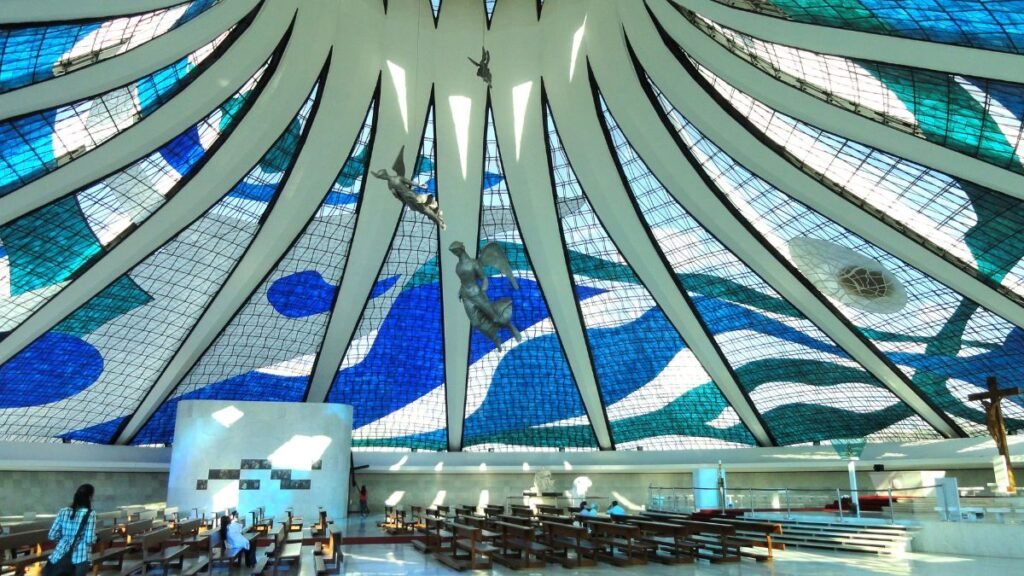
Compared to Rio, Brasilia has a 23% lower violent crime rate. This makes it a more secure option for visitors. Still, certain areas, such as Ceilândia and Samambaia, should be avoided at night. Stick to well-known neighborhoods like Plano Piloto, Asa Sul, and Lago Sul, which are considered safer zones.
If you’re driving, follow these car safety tips: always lock your doors, keep valuables out of sight, and park in well-lit areas. For nighttime travel, using Uber is a safer alternative to public transit.
While exploring popular spots like the TV Tower market, be mindful of pickpockets. Keep your belongings secure and stay aware of your surroundings. By taking these simple steps, you can enjoy your visit to this remarkable city with peace of mind.
- Brasilia is safer than Rio but requires caution in certain areas.
- Stick to safe zones like Plano Piloto, Asa Sul, and Lago Sul.
- Lock car doors and avoid displaying valuables while driving.
- Use Uber for nighttime travel instead of public transit.
- Stay alert for pickpockets at crowded markets.
How to Get Around Brasilia
Navigating a city efficiently can make or break your travel experience. Brasilia offers a variety of transportation options to help you explore its unique attractions. From the metro to ride-hailing apps, here’s everything you need to know about getting around.
The metro system is a convenient way to travel. It operates from 6 AM to 11:30 PM, with fares costing R$5. The orange and green lines connect key areas, making it easy to reach popular spots. For late-night travel, ride-hailing apps like Uber and 99 Taxi are reliable alternatives.
Uber fares typically range between R$15 and R$25, while 99 Taxi offers competitive pricing. If you prefer driving, car rental agencies such as Localiza and Movida offer flexible options. However, keep in mind that walking between landmarks like the Esplanada and the Cathedral can be challenging, as they are 3 km apart.
For a more active way to explore, consider renting a bike. Brasilia boasts 300 km of bike lanes, and Sunday rides along Eixo Monumental are particularly popular. Whether you choose the bus, car, or bike, each option offers a unique perspective of the city.
| Transport Option | Details |
|---|---|
| Metro | R$5 fare, 6 AM-11:30 PM |
| Uber | Average fare: R$15-25 |
| Bike Rentals | 300 km of lanes, Sunday rides |
| Car Rentals | Localiza and Movida agencies |
Where to Stay in Brasilia
Choosing the right place to stay can elevate your travel experience. Brasilia offers a variety of accommodation options, from budget-friendly hotels to luxurious stays. Whether you’re here for business or leisure, finding the perfect rooms is easy with these tips.
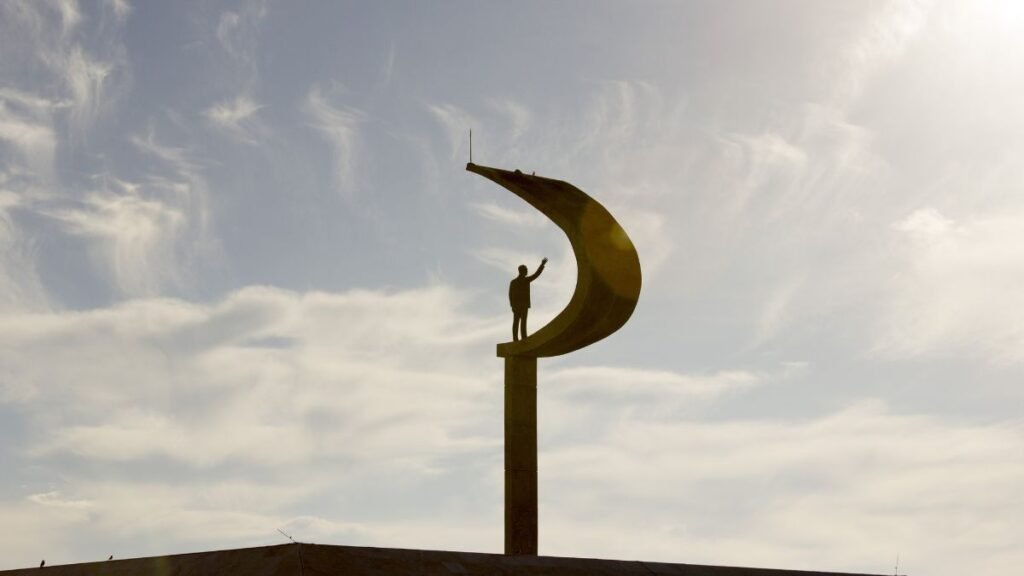
For business travelers, Asa Norte is a convenient choice. It’s conveniently located near the city center and provides easy access to government offices. If luxury is your priority, Lago Sul features upscale hotels with stunning views of Paranoá Lake.
Looking for something unique? Consider Kubitschek Plaza, where the lobby was designed by Oscar Niemeyer. It’s a blend of modernist architecture and comfort, making it a standout option for your home away from home.
Booking platforms like Decolar.com often have local deals. Mid-week stays can save you up to 40% compared to weekends. For longer stays, apartment rentals near Parque da Cidade offer flexibility and ample space.
- Asa Norte: Ideal for business travelers, close to the city center.
- Lago Sul: Offers luxury hotels with lake views.
- Kubitschek Plaza: Features a Niemeyer-designed lobby.
- Decolar.com: Great for finding local deals.
- Mid-week stays: Save up to 40% compared to weekends.
| Hotel | Price/Night | Highlight |
|---|---|---|
| Sateltour Apart Hotel | R$180 | Pool and kitchenettes |
| Cullinan Hplus | R$600 | Rooftop pool with Congress views |
What to Pack for Brasilia
Packing smart ensures a smooth and enjoyable trip. The city’s unique climate and architecture require thoughtful preparation. Start with essential items, such as SPF 50 sunscreen and polarized sunglasses. These will protect you from the intense sun, especially during the dry season when the UV index can exceed 11.
Seasonal changes also play a role in what to bring. From November to March, an umbrella is a must due to the rainy season. For cooler months, such as June to August, a light jacket will keep you comfortable. These small adjustments can make a big difference in your experience.
Footwear is another key consideration. Cushioned shoes are ideal for navigating the city’s concrete-heavy streets. Whether you’re exploring the Esplanada or the Cathedral, comfort is essential. For tech enthusiasts, a wide-angle lens is perfect for capturing Brasilia’s stunning architecture.
Finally, don’t forget important documents. A notarized copy of your passport is required for tours of the National Congress. Having these details in order is the best way to ensure a hassle-free visit.
| Item | Purpose |
|---|---|
| SPF 50 Sunscreen | Protection from high UV index |
| Polarized Sunglasses | Reduce glare from intense sunlight |
| Umbrella | Essential during the rainy season |
| Light Jacket | Comfort during cooler months |
Conclusion
A trip to this capital city reveals a blend of innovation and artistry. Unlike other global capitals, it stands out for its modernist architecture and unique urban design. Visitors often recommend a minimum of two days to fully appreciate its charm.
For those seeking more adventure, combining your visit with Chapada dos Veadeiros National Park adds a natural contrast to the city’s futuristic vibe. April and May are ideal months to explore, offering mild weather and fewer crowds.
Beyond its functional aspects, the architecture here tells a story of creativity and vision. Take a moment to admire the details in landmarks such as the Cathedral and the National Congress. These things make the city a must-see for design enthusiasts.
Finally, when visiting government areas, stay mindful of safety protocols. Stick to well-lit zones and keep personal belongings secure. This ensures your trip remains enjoyable and hassle-free. Learn more Camp World
FAQ
Who designed the iconic buildings in Brasilia?
The renowned architect Oscar Niemeyer designed many of the city’s iconic structures, including the Catedral Metropolitana and the National Congress.
What is the best way to explore Brasilia’s attractions?
Renting a car or using buses is the most efficient way to explore the city’s landmarks, as many are spread out across the capital.
Is Brasilia safe for tourists?
Yes, Brasilia is generally safe for visitors. Stick to well-lit areas, avoid displaying valuables, and stay aware of your surroundings, especially at night.
What are the must-see attractions in Brasilia?
Key attractions include the Catedral Metropolitana, Praca dos Tres Poderes, National Congress, and the Juscelino Kubitschek Memorial.
How many days are needed to explore Brasilia?
A 2-3 day trip is ideal for covering the main attractions and appreciating the city’s unique architecture and history.
Where should I stay in Brasilia?
The city center offers convenient access to major landmarks, while areas like Asa Sul and Asa Norte provide a range of accommodation options.
What should I pack for a trip to Brasilia?
Bring lightweight clothing, comfortable walking shoes, sunscreen, and a reusable water bottle, as the city can get quite warm.
Can I visit Brasilia’s government buildings?
Yes, many government buildings, such as the Palácio do Planalto and the National Congress, offer guided tours for visitors.
What is the best time to visit Brasilia?
The dry season, from May to September, is the best time to visit, characterized by pleasant weather and fewer interruptions from rain.
Are there cultural experiences in Brasilia?
Absolutely! Visit the Centro Cultural Banco do Brasil and the Museum of Indigenous Peoples to immerse yourself in the city’s rich culture.

